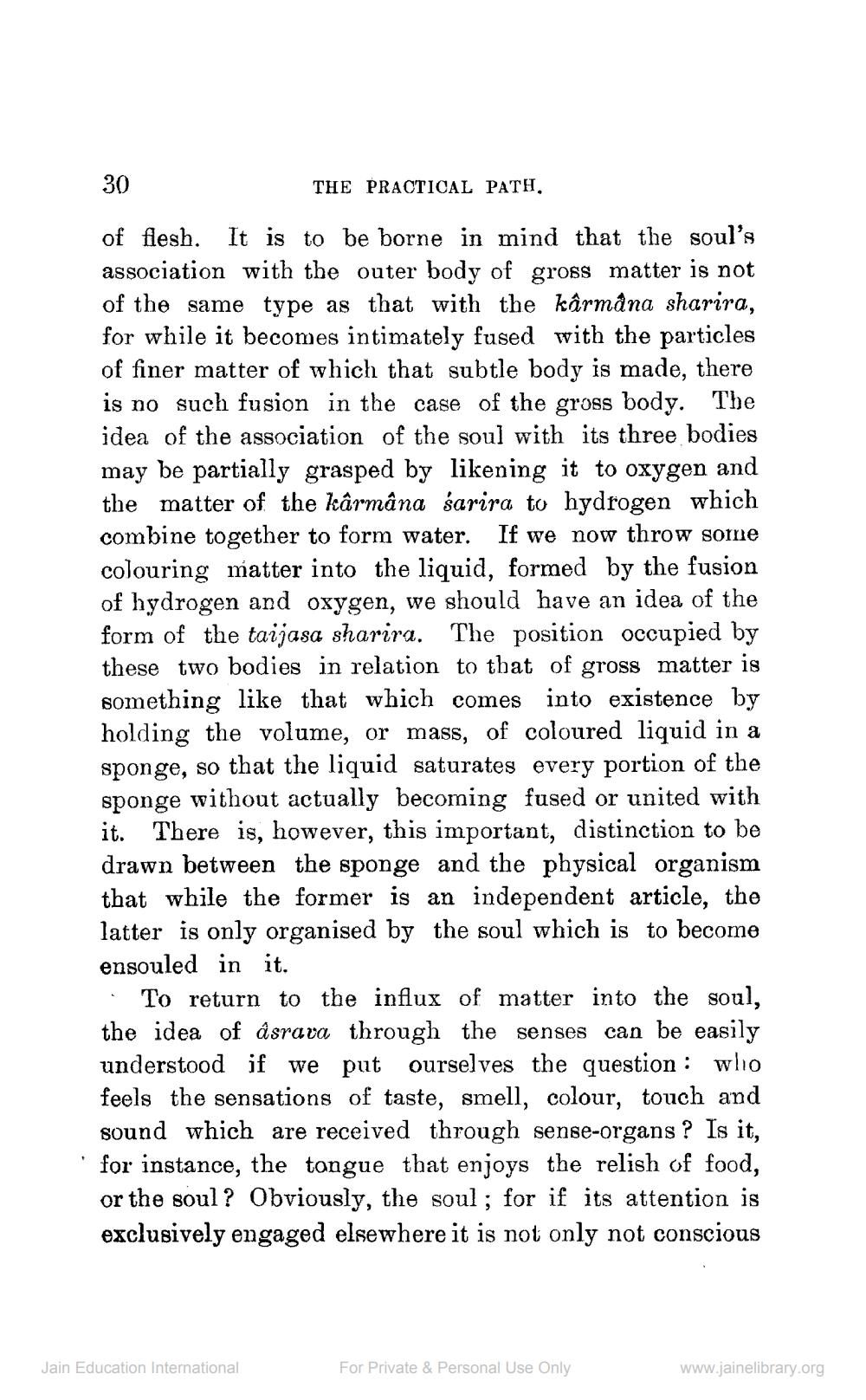________________
30
THE PRACTICAL PATH.
of flesh. It is to be borne in mind that the soul's association with the outer body of gross matter is not of the same type as that with the kârmâna sharira, for while it becomes intimately fused with the particles of finer matter of which that subtle body is made, there is no such fusion in the case of the gross body. The idea of the association of the soul with its three bodies may be partially grasped by likening it to oxygen and the matter of the kârmâna śarira to hydrogen which combine together to form water. If we now throw some colouring matter into the liquid, formed by the fusion of hydrogen and oxygen, we should have an idea of the form of the taijasa sharira. The position occupied by these two bodies in relation to that of gross matter is something like that which comes into existence by holding the volume, or mass, of coloured liquid in a sponge, so that the liquid saturates every portion of the sponge without actually becoming fused or united with it. There is, however, this important, distinction to be drawn between the sponge and the physical organism that while the former is an independent article, the latter is only organised by the soul which is to become ensouled in it. • To return to the influx of matter into the soul, the idea of ásrava through the senses can be easily understood if we put ourselves the question : wlio feels the sensations of taste, smell, colour, touch and sound which are received through sense-organs? Is it, for instance, the tongue that enjoys the relish of food, or the soul? Obviously, the soul ; for if its attention is exclusively engaged elsewhere it is not only not conscious
Jain Education International
For Private & Personal Use Only
www.jainelibrary.org




